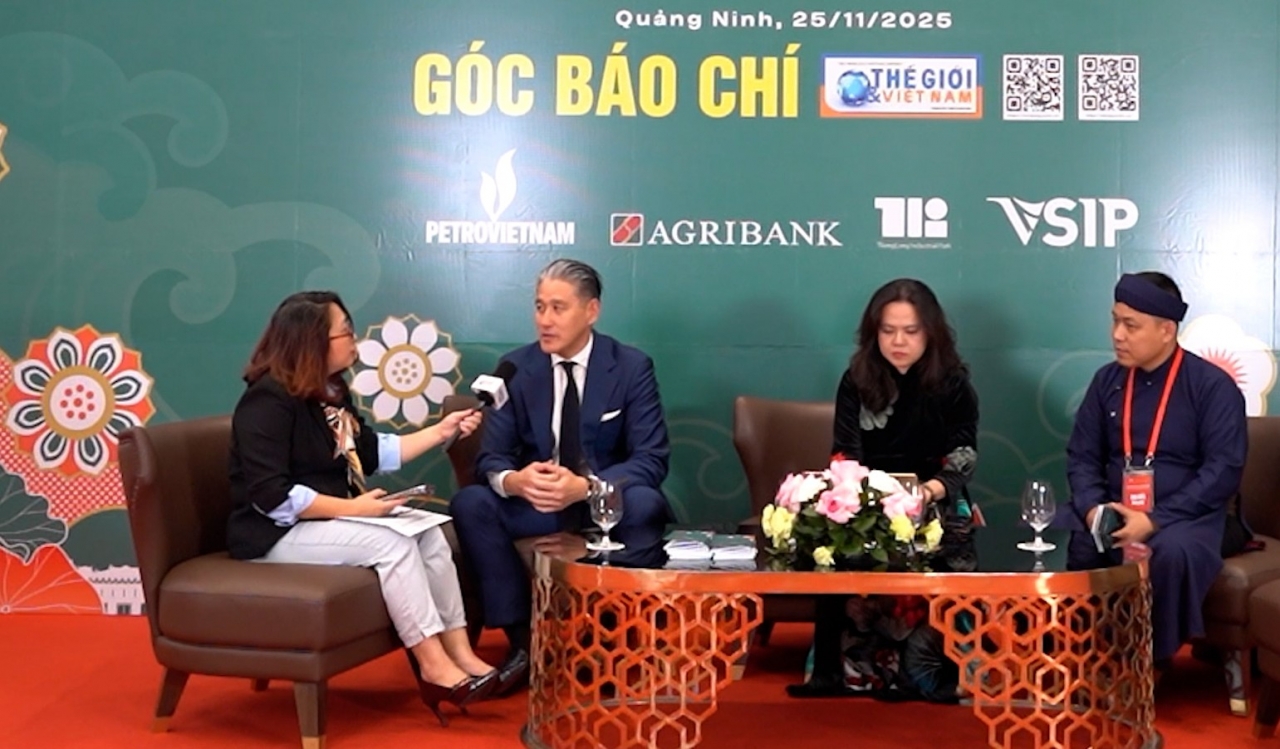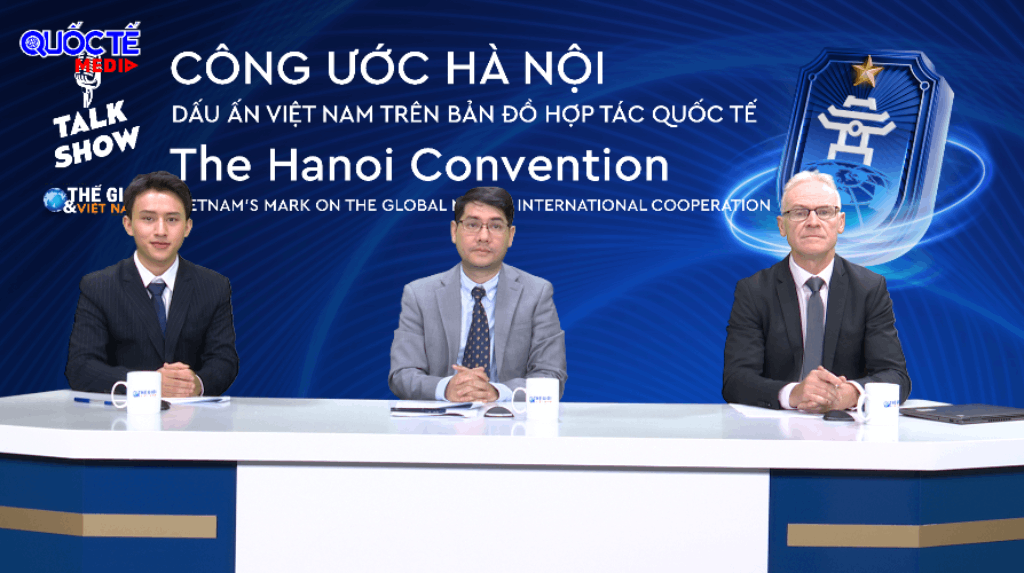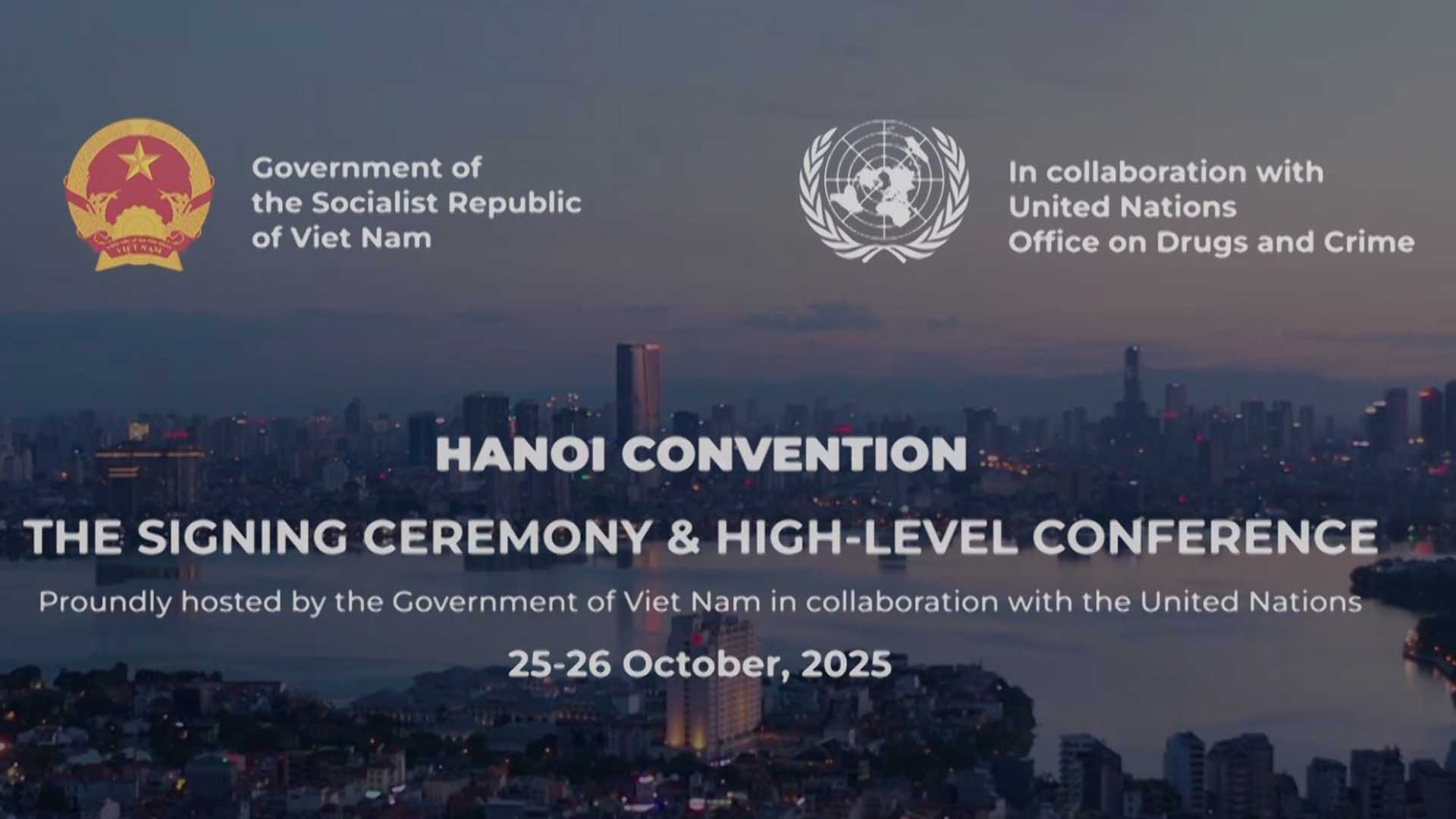
50th Anniversary of National Reunification: Special reunion of American and Vietnamese war correspondents
Latest
 |
| On the afternoon of April 27, a remarkable reunion was held at Caravelle Saigon Hotel between former journalists who had worked on both sides of the war. (Photo: Nguyen Hong) |
On the afternoon of April 27, as Vietnam joyfully marked the 50th anniversary of the Liberation of the South and National Reunification, more than 50 international and Vietnamese war correspondents, along with writers, filmmakers, and photographers, came together for a deeply meaningful reunion at this historic venue.
The Caravelle Saigon is well known to war correspondents who covered the War in Vietnam. This elegant hotel served not only as a reporting hub during the war but also as a gathering place for international journalists in the days leading up to April 30, 1975.
The program for meeting and interacting with international war correspondents in Vietnam, who reported during and after the wartime period of the resistance war against the United States, is organized by the Ministry of Foreign Affairs in coordination with the People’s Committee of Ho Chi Minh City.
A common thread among them is that they are all friends of Vietnam, and can also be considered historical witnesses of the war against the U.S. Through their pens and lenses, they showed the world what Vietnam went through during that time…
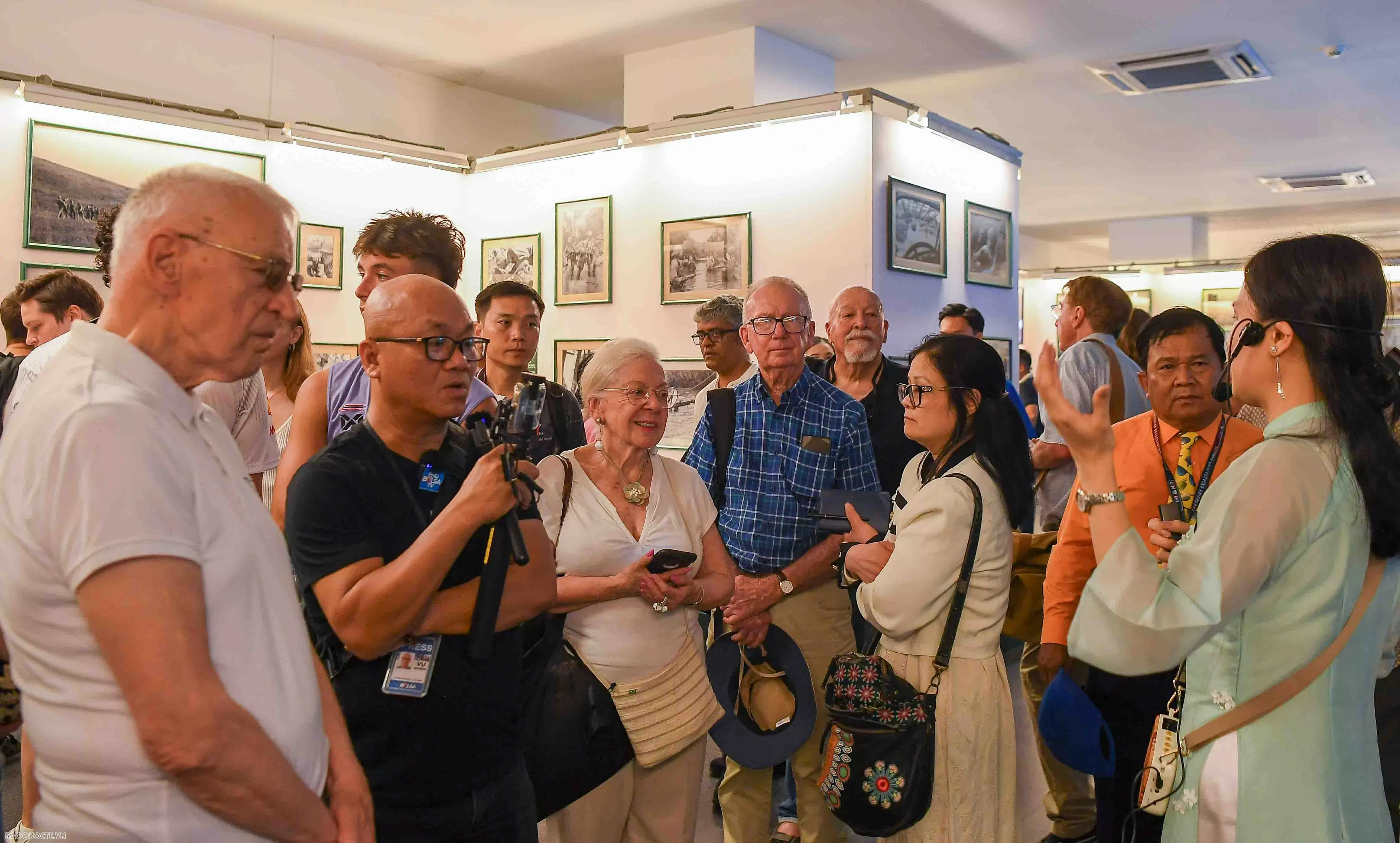 |
| The reporters visit the War Remnants Museum in Ho Chi Minh City. (Photo: Nguyen Hong) |
Among them are familiar names such as photo journalist Nick Ut (Associated Press-AP), who shocked the world with the “Napalm Girl” photo, and Edith M. Lederer—the first female AP reporter sent to Vietnam to cover the war. Also featured is photographer Nakamura Goro, renowned for his photo series on Agent Orange in Vietnam, currently on display at the War Remnants Museum in Ho Chi Minh City…
Vietnam – A home for Vietnamese people from the North, Central, and South
At the beginning of the event, former New York Times and TIME Magazine reporter Tom Fox fluently recounted in Vietnamese his memories of Vietnam during the years engulfed in the flames of war.
He recalled that in 1966, upon reaching draft age, he refused to enlist in the military and instead requested to go to Tuy Hoa, Phu Yen in Vietnam as a volunteer, helping people on the other side of the world.
Tom Fox has mostly used Vietnamese on his return journey to Vietnam. He shared that after witnessing firsthand the suffering endured by the Vietnamese people, he decided to become a journalist. He began learning Vietnamese, learned to eat *nuoc mam* (fish sauce)... and in 1971, he married a woman from Can Tho. “I was so happy—we’ve been married for 55 years,” the American reporter said.
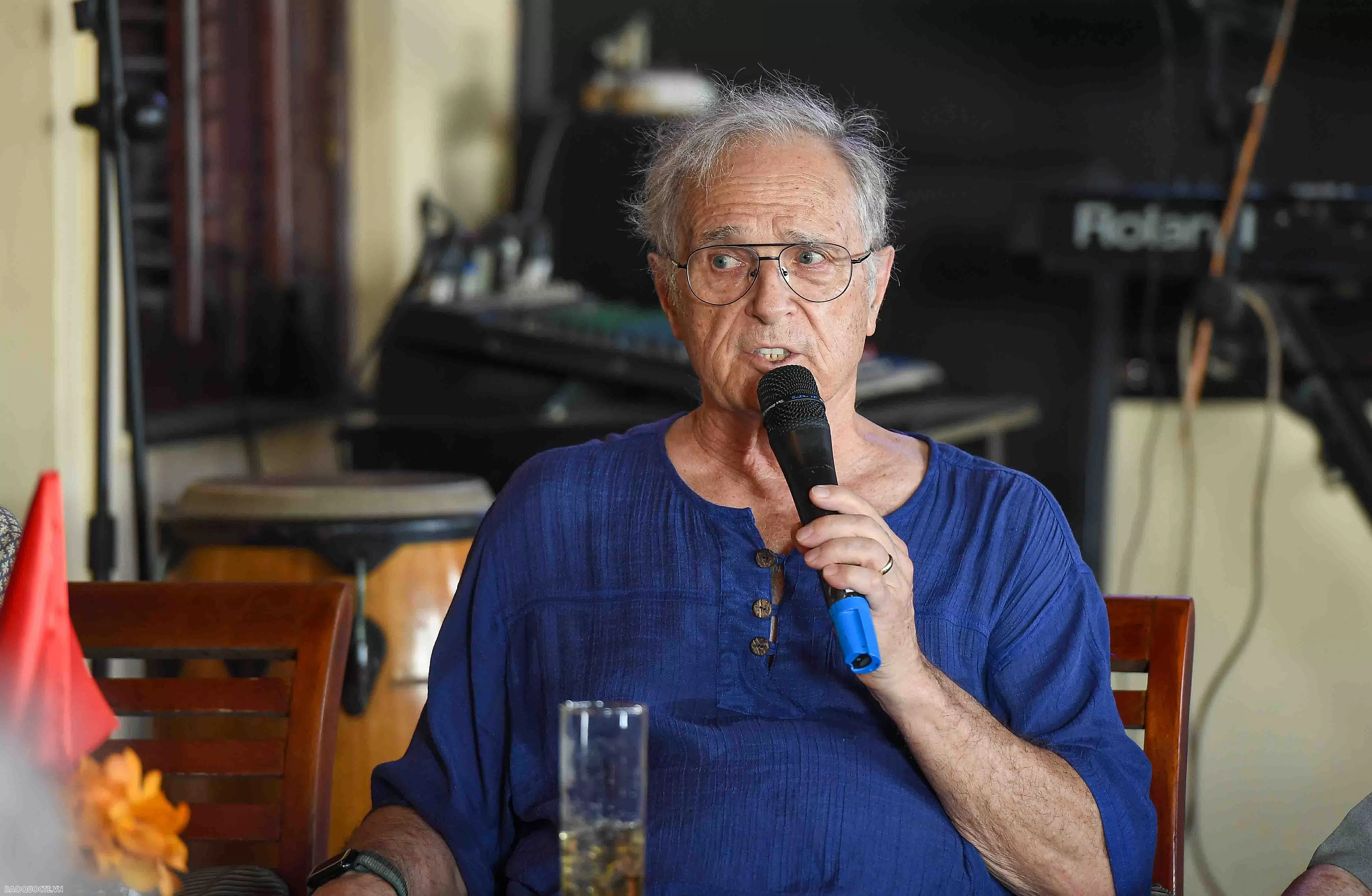 |
| Former reporter for *The New York Times* and *TIME* magazine, Mr. Tom Fox. (Photo: Nguyen Hong) |
Tom Fox also shared that he is extremely happy during this return to Vietnam, where he has witnessed the vibrant spirit of Vietnamese youth—people who love themselves and love one another. “Vietnam has truly become a common home for all Vietnamese people from the North, Central, and South.”
Revolutionary writer and journalist Doan Minh Tuan, now 94 years old and a former war correspondent from 1961 until the day of Vietnam’s reunification, humorously shared: “I’m 94 this year. I took part in the revolution against the French and American invasions, and now I’m fighting...with a cane.”
Mr. Tuan expressed his gratitude to American friends—those who opposed the war and always stood in solidarity with the Vietnamese people.
“I’m deeply thankful to the American friends who have always stood by Vietnam. You, the war correspondents—regardless of which side you were on—we are all friends. Vietnam embraces a policy of national reconciliation and the 'bamboo diplomacy': no matter how strong the winds, the bamboo bends but rises again—it cannot be broken.”
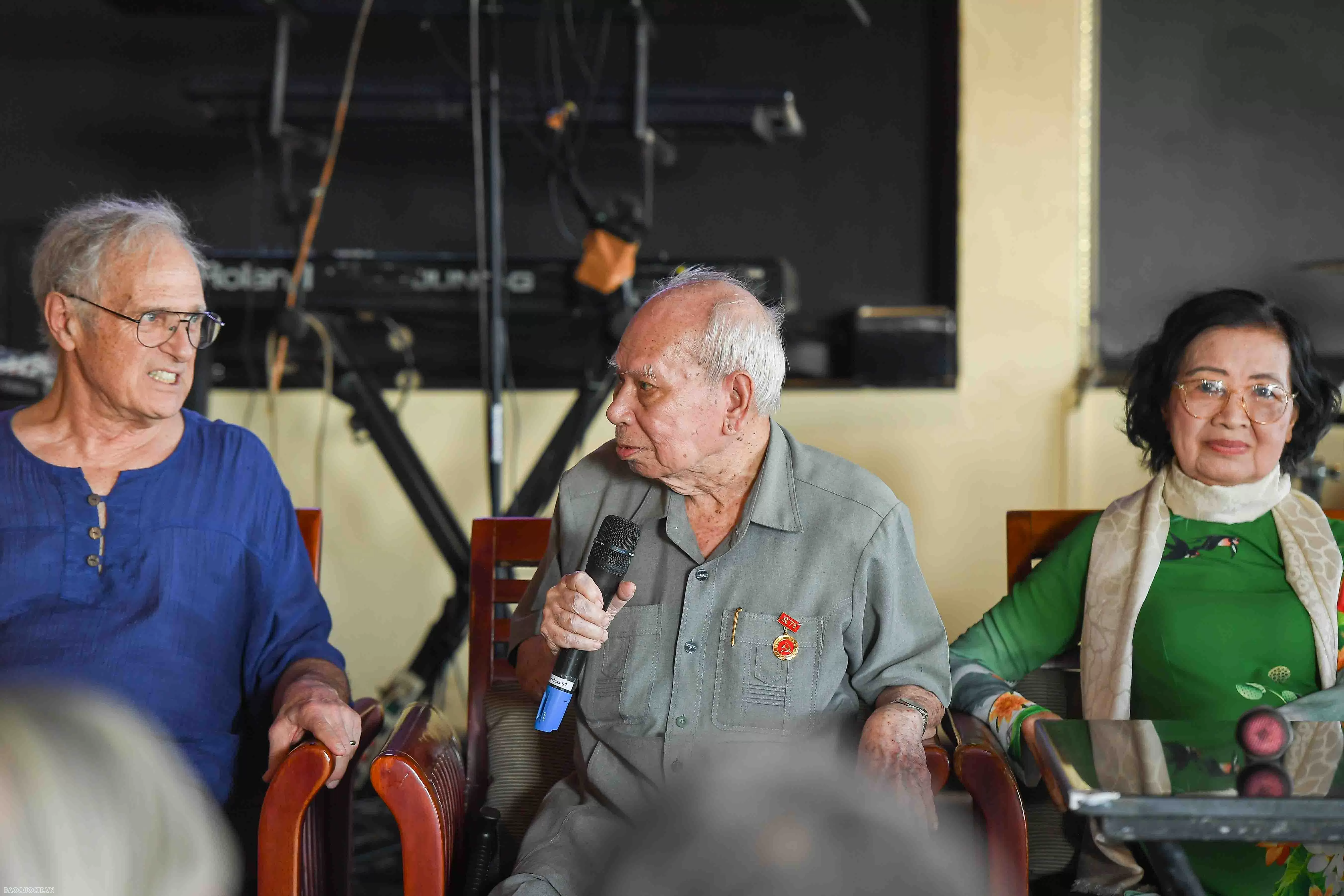 |
| Revolutionary writer and journalist Doan Minh Tuan (in the center) shares his thoughts at the meeting. (Photo: Nguyen Hong) |
As he finished speaking, the veteran correspondents clasped hands tightly and raised them high, expressing unity. Though they once stood on opposite sides of the battlefield, they are now bound by a shared love for Vietnam.
Having breakfast with a liberation soldier
Indian journalist Nayan Chanda, correspondent for the *Far Eastern Economic Review* (FEER) at Indochina, shared a memory of having breakfast with a liberation soldier right in his own home.
Present in Saigon during the earliest days after the liberation, he happened to cook breakfast for the soldier, and the two ended up sharing the meal after overcoming initial tension and suspicion.
"Perhaps the soldier entered my home to check if there were any remnants of the former regime’s military hiding there. After I brought out an article I had written about Lenin, the two of us happily sat down and had breakfast together," said Mr. Nayan Chanda.
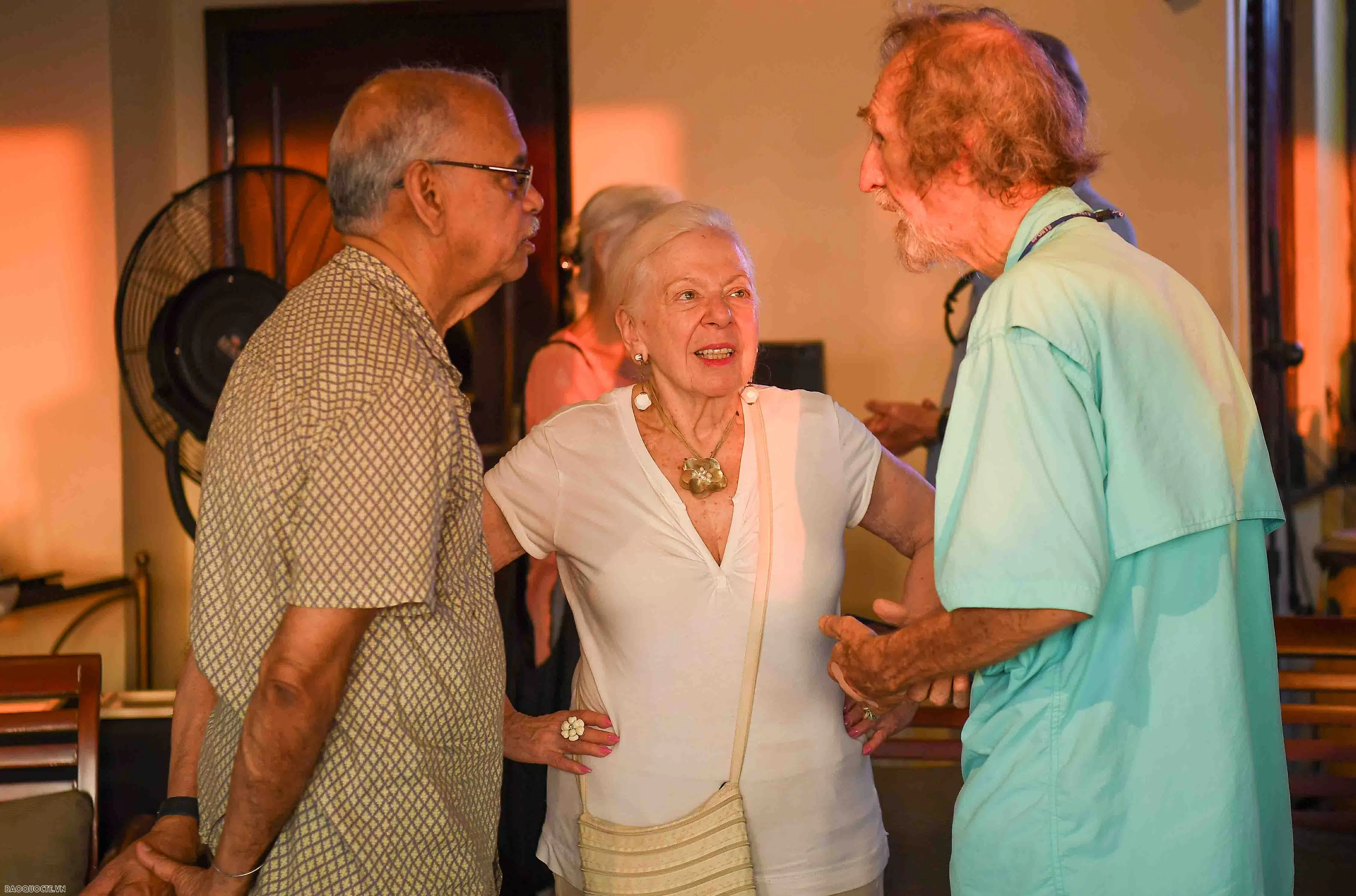 |
| Mr. Nayan Chanda from India and Ms. Edith Madelen Ledever, former AP correspondent, share memories with their colleagues. (Photo: Nguyen Hong) |
Recalling his years reporting in South Vietnam, Nayan Chanda shared that he had ignored warnings advising him to "leave Saigon" in order to stay and witness a historic moment from 50 years ago — a decisive time that marked the beginning of a new chapter for the Vietnamese people.
"Instead of evacuating like most international correspondents at the time, I chose to remain in Saigon after April 30 of that year, to observe life under the new government," Mr. Chanda said.
Thanks to that decision, Nayan Chanda was able to capture a vivid and truthful picture of the “strangely quiet” atmosphere on the streets of Saigon on the morning of May 1, 1975.
The Beauty of Peace in Vietnam
During the gathering, Edith Madelen Ledever—the first female reporter from the Associated Press (AP) assigned to cover the war in Vietnam during 1972–1973—shared that she had witnessed many pivotal historical moments, including the withdrawal of U.S. troops from southern Vietnam in 1973.
Edith Madelen recalled that when she returned to Vietnam in 1993—exactly 20 years after she first set foot in the S-shaped land—what surprised her most was how warmly she was welcomed everywhere. “There was no resentment toward Americans,” she said.
“Since then, I’ve returned to Vietnam many times—to Ho Chi Minh City for the 35th anniversary, the 40th, and now the 50th anniversary of the Liberation of the South.”
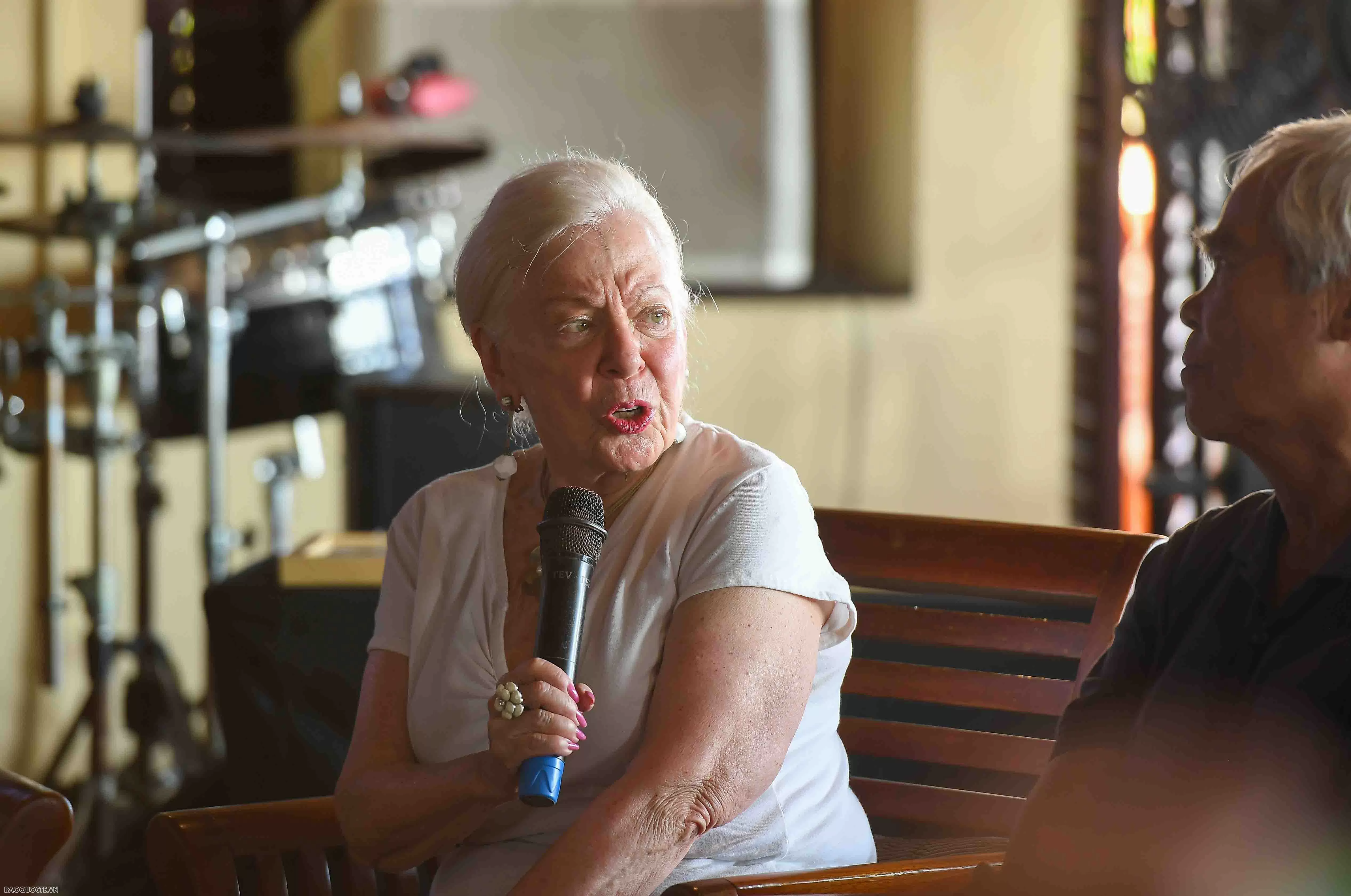 |
| Ms. Edith Madelen Ledever – the first female reporter from the Associated Press (AP) assigned to Vietnam to cover the war during the 1972–1973 period. (Photo: Nguyen Hong) |
The former AP correspondent became emotional as she reflected on how the city she once knew as Saigon is now Ho Chi Minh City. Today, it is growing rapidly, filled with high-rise buildings and shops, but what has left the deepest impression on her is the openness of its people.
“In the past, I reported only on war. But this time, as I traveled the length of Vietnam, I came to truly feel the beauty of peace.”
Also a female journalist during the years when Vietnam was still engulfed in war, director, writer, and reporter Nguyen Thi Xuan Phuong could not hide her emotions as she had the chance to meet and reconnect with former international war correspondents.
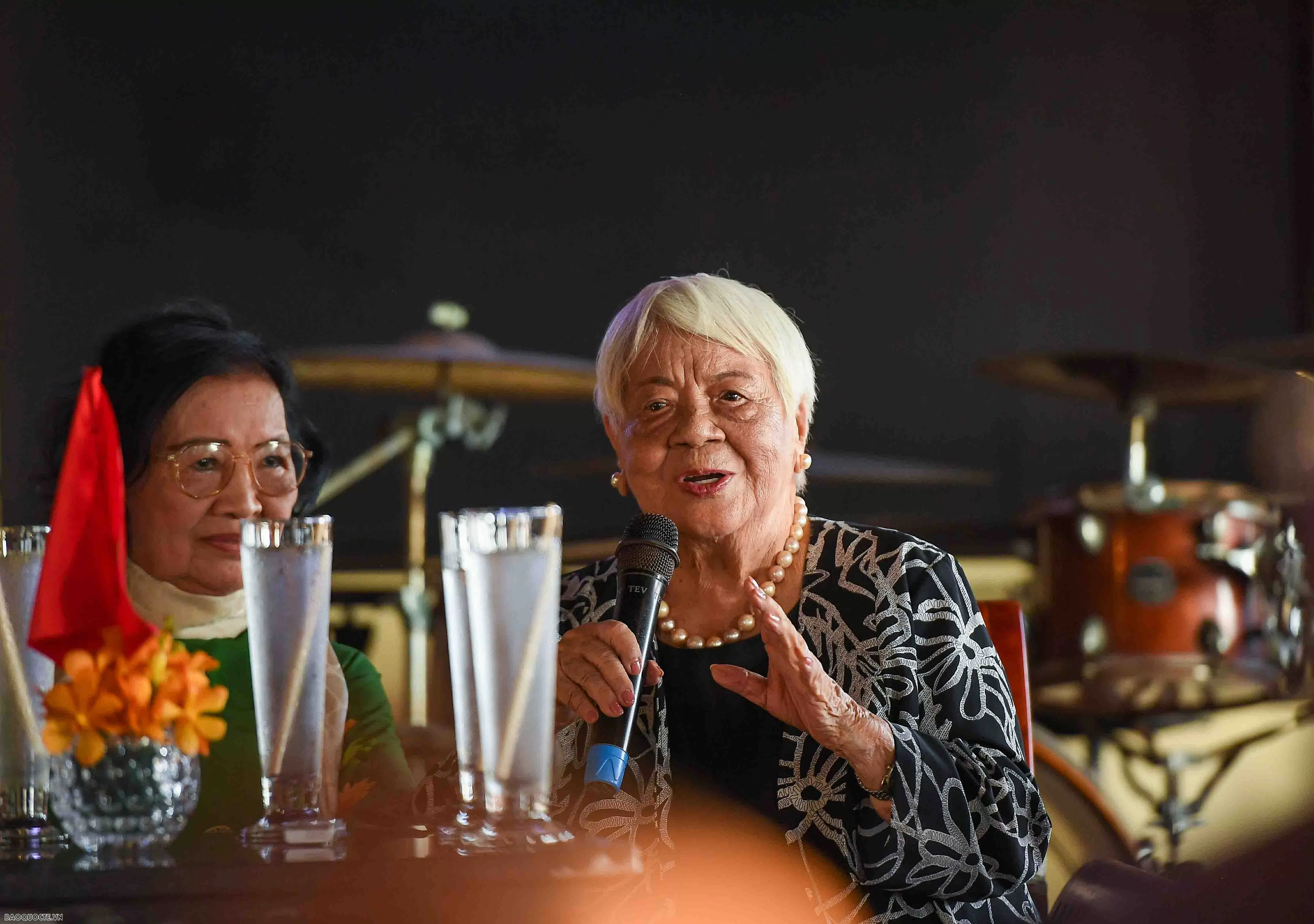 |
| Director, writer, and journalist Nguyen Thi Xuan Phuong. (Photo: Nguyen Hong) |
She recounted that exactly 50 years ago, she was among the first journalists to follow the tank regiment into the Independence Palace on April 30, 1975. On May 1, 1975, she and her team were present on the rooftop of the Caravelle Hotel—then a meeting and working space for foreign correspondents in Saigon.
According to her, war correspondents on both sides were seasoned, courageous journalists, willing to sacrifice themselves for the demands of their profession.
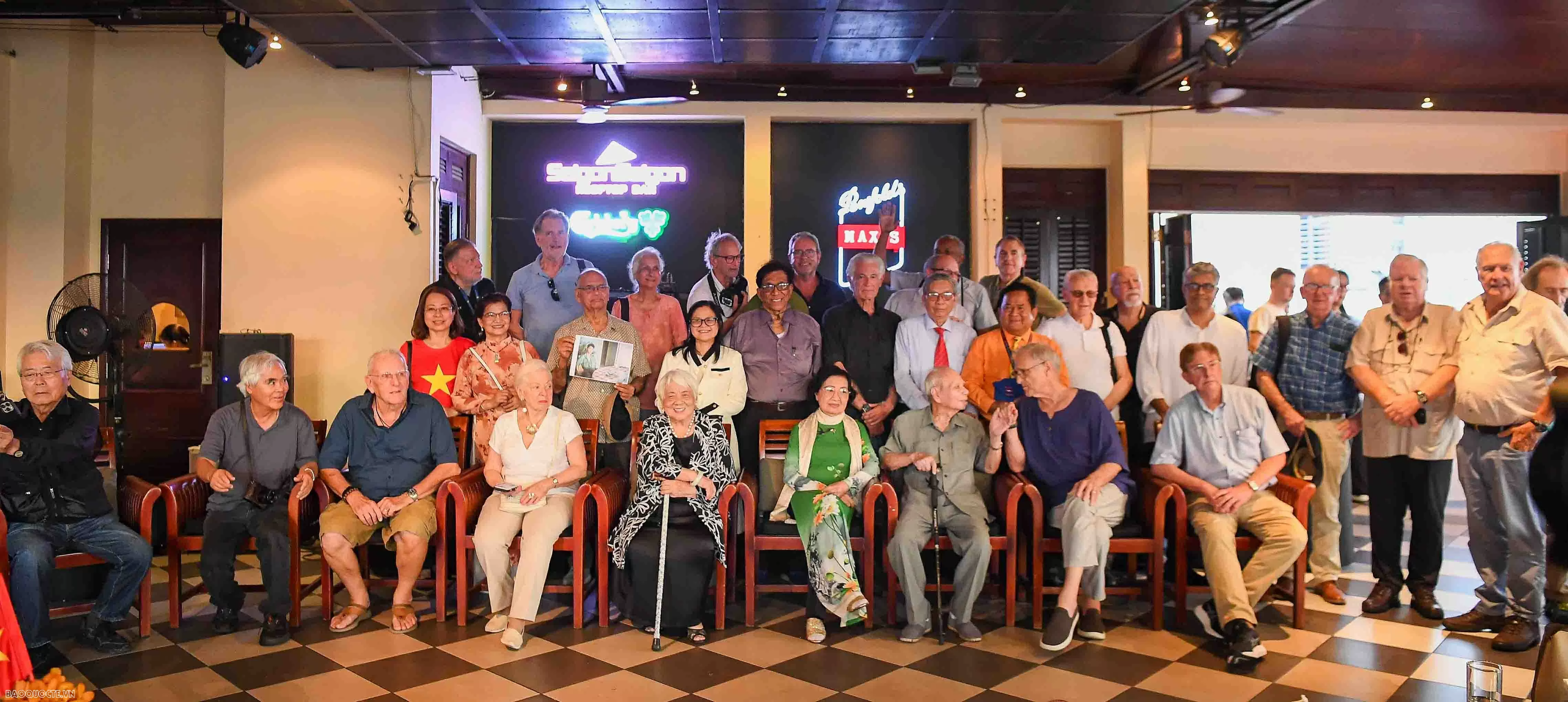 |
| A group photo at the reunion. (Photo: Nguyen Hong) |
That this 50-year reunion was also held on the rooftop of the Caravelle Hotel made Xuân Phượng emotional, as she reflected on colleagues—both Vietnamese and international—who had fallen in the line of duty.
She shared a poignant story about a letter from the son of a late French journalist. In it, he wrote that his father had once said, “You must visit Vietnam one day. See the places I walked through, to understand why I chose to be there in those years.”
 |
| A group photo of participants. (Photo: Nguyen Hong) |
Each person had their own story, but all former war correspondents shared a common bond—deep affection for the S-shaped land of Vietnam. At this special reunion, where Americans spoke Vietnamese and Vietnamese spoke English to share memories from 50 years ago, they demonstrated a shared language of peace and love for the beautiful country of Vietnam. This once again affirmed the value of peace and reconciliation, as well as expressed Vietnam’s gratitude to international friends who stood by its side during difficult times.







